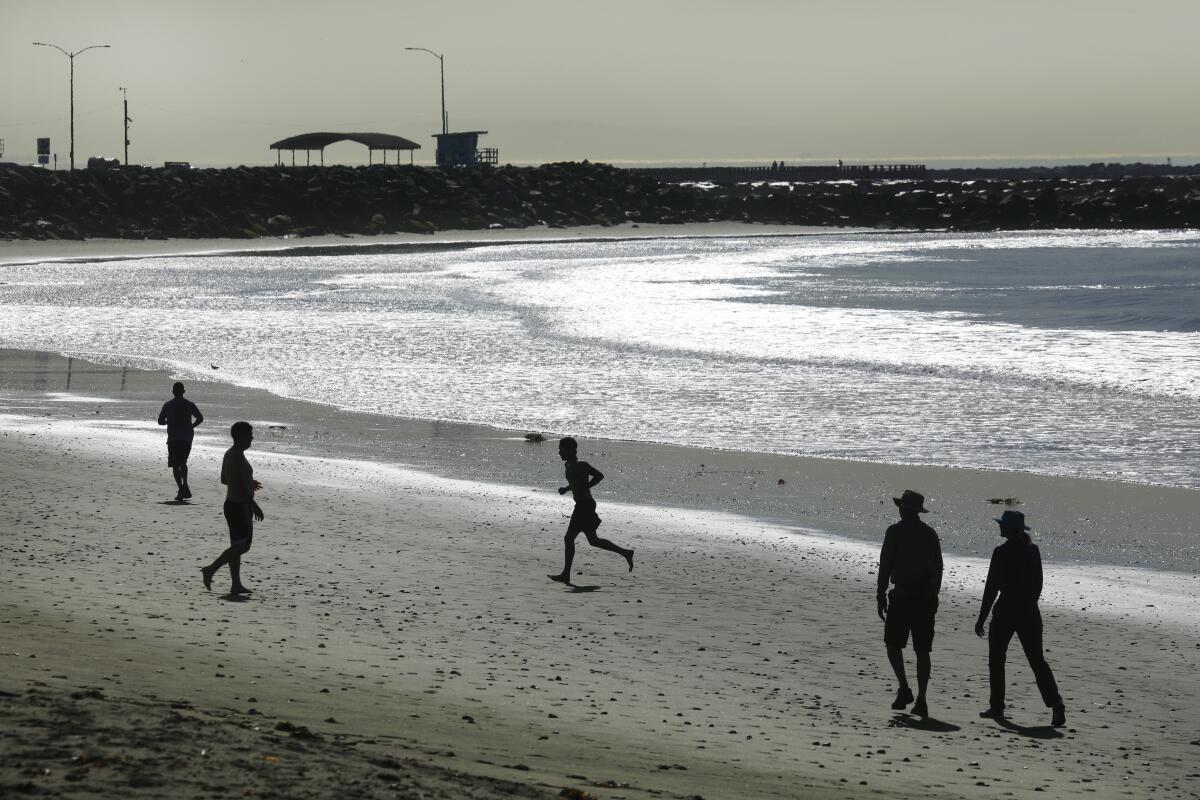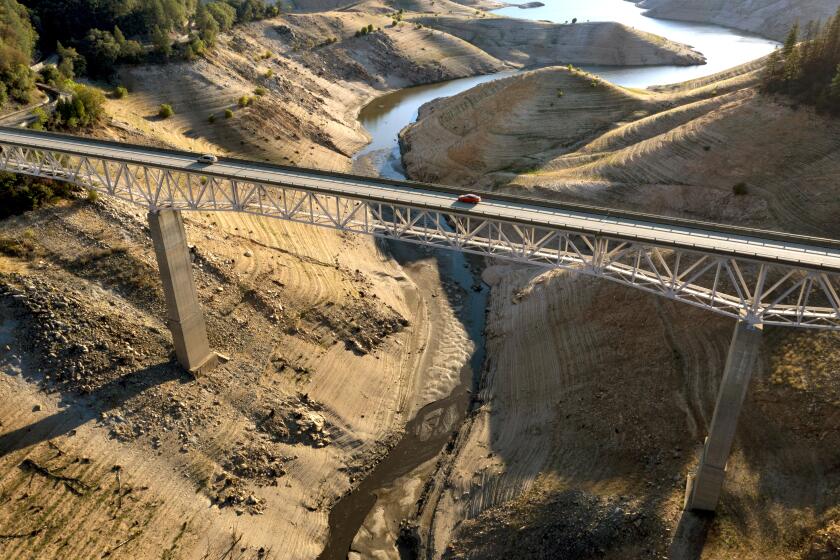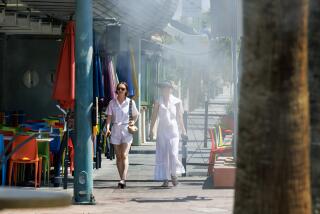Temperature records broken across Los Angeles area at end of spring heat wave

- Share via
Friday marked a day of record high temperatures for the Los Angeles area, amid an unseasonable spring heat wave.
Daily records were broken or tied in eight locations, according to the National Weather Service in Oxnard.
Long Beach reached a sweltering 101 degrees, breaking the old record of 92 set in 2014, forecasters said. Camarillo reached 99, breaking the record of 86 set in 2003. Oxnard’s high of 98 broke the previous record of 85 set in 1938. And Santa Barbara reached 90 degrees Friday, breaking the record of 87 set in 2019.
At UCLA, the temperature reached 94 degrees; the previous record of 87 was set in 1989. Records were also broken in downtown Los Angeles — which reached 95, vs. 92 in 1989 — and Los Angeles International Airport — at 97, vs. 88 in 1989 — forecasters said.
Burbank’s high of 99 tied a record set in 1989, forecasters said.
Forecasters issued a heat advisory, which expired Friday evening, and public warnings about increased fire danger and risk of heat-related illness.
Conditions this week raised worries about the drought that continues to grip California.
Californians reduced urban water use by half a percent in February, a far cry from Gov. Gavin Newsom’s voluntary conservation goal of 15%.
The latest U.S. Drought Monitor update, released Thursday, showed more than 40% of the state under extreme drought conditions — up from about 16% three months ago. Nearly all of the state is classified as being under extreme or severe drought.
Statewide snowpack on Thursday was an abysmal 27% of normal for the date, according to state data. Despite a smattering of winter storms, California recorded its driest first-quarter stretch, state officials said last week. January through March are typically the heart of California’s rainy season.
Water regulators are increasingly concerned about dwindling supplies and backsliding conservation efforts. Urban water usage in the state decreased by just half a percent in February, compared with the same month in 2020.
Some relief is on the way, with temperatures forecast to fall over the weekend. Highs are expected to be about 10 degrees cooler in most locations Saturday, forecasters said.
More to Read
Sign up for Essential California
The most important California stories and recommendations in your inbox every morning.
You may occasionally receive promotional content from the Los Angeles Times.












